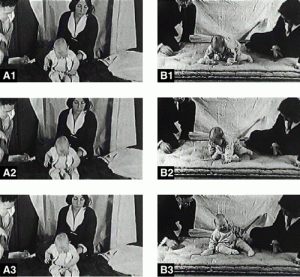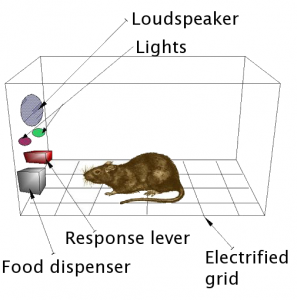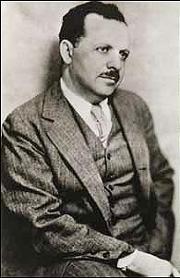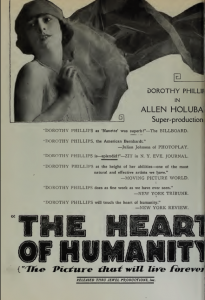“As promised and as always TBU NEWS is here to give you as much as objective informations and from different points of view on various topics. Nevertheless if they are controversial or not. At the end it’s all up to you.”
Fear is a weapon of social control used to manipulate thoughts and actions without people even knowing it. Today it’s used to control and alienate would-be practitioners of alternative spirituality. How has this happened and who stands to gain from it? By understanding how fear is used we can be free of manipulation in our choice of spirituality.
If you were an early Christian (back when it was still an alternative religion) you had to be careful not to become food for a lion. Once Christianity was established, if you were ‘pagan’ or a ‘witch’ you had to be careful not to be burnt at the stake. Nowadays, unless you live in China where Falun Gong practitioners – who were once supported by the state until they gained too much influence – are still victims of false imprisonment, torture and live organ harvesting, or in a strict middle-eastern country where you might be hung for expressing alternative spiritual beliefs, it’s somewhat safer to be on the fringe of religious belief.
Free from the fear of impending death, one might think that we have much more spiritual freedom. Unfortunately however in the Western world, physical abuse has been substituted for fear inducing propaganda, and we have long been studied as a humanity to discover the most effective psychological triggers with which we can be controlled. Rather than physically stopping people from practising spirituality, these techniques insidiously influence social attitudes so that people avoid exploring alternative spirituality to begin with.
For a greater understanding of modern day manipulation, let’s step back in time to the early 20th century and the birth of propaganda and social engineering.
Fear responses can be conditioned
The fight-or-flight response is one of the most basic instinctual mechanisms we are born with. Fear has an impressive history of helping us to avoid harmful situations, and as we listened to it and survived by running from predators, these instincts were probably reinforced through generations as those who survived through fear brought their children up to survive in the same way.
But fear can also be used as a mechanism to control us and scientists have long been fascinated by fear reactions, conducting many studies trying to understand how fear becomes conditioned. The greatest developments in this field have been in the realm of ‘Behaviourism’; the theory that animal and human behaviour can be explained through conditioning.
John B Watson – “The driving force in society is not love, it’s fear”
In the early 20th century, John B Watson began experimenting with fear-based conditioning. He wanted to know if phobias could be conditioned in humans.
Watson conducted the “Little Albert” experiment, showing an emotionally stable baby:
- a fire;
- a monkey;
- a dog;
- a rabbit; and finally
- a white lab rat,
all of which Little Albert responded to without fear. Watson then began making a loud noise every time Little Albert reached out to touch the rat. With increasingly loud noises, Little Albert became more and more distressed when the rat came near.
Watson then showed Little Albert stimuli which had similar characteristics to the rat, including other animals, a fur coat and a Santa Clause mask. Each time Little Albert (although previously calm) responded with fear, leading Watson to determine that fear is most likely a conditioned response in humans.
Watson completed many more experiments with young babies, famously stating “Give me a baby and I can make any kind of man”. Can you guess what he turned his understanding to later in life? Advertising.
BF Skinner – “Human behaviour is predictable and therefore controllable”
Burrhus Fredric Skinner felt that there is no such thing as free will and that all actions undertaken are pre-determined by our environment. As part of his studies in ‘Radical Behaviourism’ he infamously created the Operant Conditioning box (nicknamed the Skinner Box) which used negative reinforcement in the form of electric shocks to create escape and avoidance learning in animals.
‘Escape learning’ is the behaviour exhibited when an animal (or human) learns that they can escape pain through completing a certain action, for example, a rat becoming conditioned to jump off a platform into water (something they would not normally do) if the platform became electrified.
‘Escape learning’ can be turned into ‘avoidance learning’ by adding an associated stimuli, eg. a light bulb turning on before an electric shock is administered. The rat would begin to associate the light being turned on with an impending electric shock and learn to pre-emptively jump off the platform for protection.
The scary thing about ‘avoidance learning’ is that it’s self-reinforcing – once the avoidance behaviour is conditioned, it will continue even when the shock is turned off. The reinforcement then becomes relief from not getting an electric shock, and the test subject will continue the behaviour due to the perception of a threat rather than an actual threat whenever the pre-shock stimuli is presented.
The use of fear in propaganda
We are governed, our minds are molded, our tastes formed, our ideas suggested, largely by men we have never heard of. …In almost every act of our daily lives, whether in the sphere of politics or business, in our social conduct or our ethical thinking, we are dominated by the relatively small number of persons…who understand the mental processes and social patterns of the masses. It is they who pull the wires which control the public mind – Edward Bernays
Possibly no one has been as influential in changing public opinion by understanding and manipulating the human psyche than the ‘father’ of public relations and propaganda – Edward Bernays.
Bernays was the double nephew of Sigmund Freud, who theorised that the driving force behind people’s actions was their inner turmoil, instincts, and unconscious desires. Based on his uncle’s work, Bernays understood that people could be made to act irrationally if you stimulate their subconscious desires and impulses, and he successfully did this for a huge list of wealthy backers.
He was responsible for (among many other things):
- Making it acceptable for women to smoke – backed by the tobacco industry;
- Making bacon and eggs a staple breakfast food in America – backed by a meat packing company;
- Causing a consciousness harming chemical to be added to water supplies – backed by a company producing aluminium; and
- The overthrow of a democratic regime by US forces – backed by a company that grew bananas.
Bernays paved the way for some of the greatest human rights violations in history, and was later quoted as an inspiration by Joseph Goebells, the infamous propaganda minister of Nazi Germany. He was a master of fear-based manipulation.
Creating moral panic to sway public opinion against the ‘shadowy stranger’
In 1951, the CIA staged a coup to overthrow President Arbenz, the head of a democratic government in Guatemala. The events that led to this coup were engineered by Bernays and backed by the United Fruit company who were using masses of land in Guatemala to grow bananas.
Why was Arbenz such a problem for United Fruit? He was standing in the way of their profits.
President Arbenz wanted United Fruit to obey the Guatemalan constitution, and pay export duties and fair prices for the land they acquired. When they declined he decided to redistribute their land to 100,000 Guatemalan families, paying United Fruit what the land was worth based on their (falsified) tax returns. Bernays was brought in to fix the problem. Can you guess what his solution was? Fear.
To most of the American public, Guatemala was an unknown entity, a ‘shadowy stranger’ on which all manner of fears could be projected. Bernays created a propaganda campaign that depicted President Arbenz at the head of a communist-backed regime that would be used as a launching place for an imminent invasion of the US. He even created his own fake media organisations in order to help spread propaganda.
At a time when communism was seen as a great threat, Bernays caused enough fear in the American public as to engineer consent for the CIA overthrow which put Guatemala back in the hands of a violent dictator. This dictator was backed by the United Fruit Company and his instatement started a chain reaction which eventually led to the deaths of over 200,000 Guatemalans.
What has all this got to do with spirituality and why should you care?
What if I told you that the same techniques used to:
- make Little Albert afraid of rats;
- reinforce avoidance learning in animals; and
- garner support in the Guatemalan overthrow
are the same techniques used today by governments, anti-cult organisations and the media to create an unnatural fear of alternative spirituality in almost everyone? Even in people who think they are open minded towards spirituality.
Let’s take a step back for a moment. Wikipedia lists 263 New Religious Movements (the term preferred for new spiritual groups by scholars of alternative spirituality / religion over the widely used “cult” which has strong negative connotations). There are probably hundreds or thousands more alternative spiritual groups of varying sizes that could be added to this list.
Unfortunately there are a small percentage of criminal groups (of which there are already appropriate laws to deal with), and an even smaller number of groups with high profile mass suicides which are given widespread media coverage.
So why is it that this small group of criminal New Religious Movements (NRMs) has come to represent how we perceive alternative spirituality in general? And how does it affect our ability to pursue our spiritual yearnings?
Have you ever learned of an NRM that holds values that may not be completely in line with our modern day consumer society and felt fear towards them? Have you been sceptical of their teachings or motives and thought to yourself or out loud to others that they “must be a cult”?
If yes, then you have probably been affected by this manipulation (most likely without being aware of it), and you’re probably affecting others too
Altruistic fear and the fear of crime in alternative spiritual groups
In the Guatemalan example above, the American public were manipulated – despite reality – to fear an impending communist attack. Would they have feared only for themselves, or would they also have feared for those close to them?
When I was in my teens I came across a newspaper article that talked about ‘satanist’ groups operating in the hills near my house. With no more than a passing interest, I told my mum about the article and she freaked out. I’m sure she had images of devil worship, child sacrifice and whatever else people think satanists do – she was afraid I would be in danger and the idea threatened her mainstream Christian beliefs.
In the British crime survey of 1982, only 35% of respondents who replied that they were worried about crime were worried about being victimised themselves; their fears were projected on to significant others in their lives. (Maxfield, 1984, quoted in Possamaï & Lee, 2004)
This effect, where the fear of victimisation is projected onto significant others (partners, children, friends) is known as altruistic fear – it’s been used in propaganda campaigns at least as far back as World War One and some scholars believe that it is a main motivating factor in the anti-cult movement. NRMs and alternative spirituality are often unknown entities and being sensationalised by the media they become an easy target for projection of all sorts of fears, often by distraught family members who are afraid that their significant other may be caught up in something harmful and beyond their control.
When altruistic fear can be created in people against a segment of society, it can then be used to encourage them to willingly give up their human rights and freedoms.
Want to introduce a national picture database of all American citizens? Make them afraid that their jobs are unlawfully being taken away by illegal immigrants and tell them that a national ID card will fix the problem.
Want to censor web forums and esoteric material in the UK? Make people afraid that without default-on censorship their children will be exposed to harmful adult material and shape public opinion against the esoteric by putting it into the same category as drug use, terrorism and other deviant behaviour.
Fearing for themselves and their loved ones, with the propaganda being repeated by key influencers in society, people will rarely think twice about what it is they’re giving up for a false sense of security.
Key influencers in a spiritually fear-full society
The world today is a web of disinformation about alternative spirituality promoted and sustained (whether consciously or not) by vested interests in many areas of society including:
- the anti-cult movement and moral entrepreneurs;
- some religious organisations (others are pro-freedom of spiritual choice);
- mass media journalists, news and current affairs programs;
- celebrities; and
- governments.
Where to start?
The anti-cult movement and information-terrorism on the world wide web
The anti-cult movement is a strange place. Paradoxically it has been referred to as a “cult” itself.
It is a place of:
- debunked theories (eg. “mind control”);
- a criteria for defining cults that is so broad it could apply to Alcoholics Anonymous and most mainstream religions;
- the strongly religious who have a vested interest in keeping people away from alternative spirituality; and
- moral entrepreneurs; psychologists and self proclaimed “cult experts” that have made a living out of “cult” deprogramming (sometimes known to be done in an illegal manner on unwilling participants).
In Guatemala, Bernays relied on mainstream media channels to rouse enough fear in the American public to justify an incursion.
Anti-cult information-terrorism is rampant on the world wide web. Often done anonymously, words become weapons.
Attribution: tomskydive
We see this same technique today as the anti-cult movement plays a strong role in the amplification of fear against religious minorities, assisting the mainstream media as a “repository of information for the public, the press, and governmental agencies […] aim[ing] to put pressure on ‘cults’ by enlisting the support of political, economic, religious, media, and educational institutions which have access to greater resources and sanctioning power.(Chryssides, 1999, quoted in Possamaï & Murray Lee, 2004)“.
However when the internet became part of our everyday lives, the anti-cult movement gained a new weapon with which to spread anti-cult propaganda, using forums and discussion lists to disseminate material aimed at demonising and dehumanising alternative spirituality and those supporting it.
It is paradoxical to note, especially since NRMs are claimed to use the Web to attract new membership […] that Opponents of New Religious Movements appear to have been more active and more aggressive in cyberspace than many of the movements themselves. (Hadden & Cowan, 2000, quoted in Zoccatelli, 2001, quoted in Possamaï & Lee, 2004)
Despite the dubious background of the anti-cult movement, the media (often being uninformed of the benign nature of the majority of NRMs) continues to rely on them for “expert opinions”. The anti-cult movement is also strongly influential in the government sphere, having played a pivotal role in influencing the 2001 French “anti-cult” legislation which has had strong consequences for religious freedom and diversity in France and abroad and has assisted in creating a strong climate of religious intolerance
Source of the article and read more at: http://consciousreporter.com/
References:
[1] Maxfield, M. Fear of Crime in England and Wales. London: HMSO, 1984. quoted in Adam Possamaï & Murray Lee (2004): New religious movements and the fear of crime, Journal of Contemporary Religion, 19:3, 337-352
[2] Chryssides, G. Exploring New Religions. London: Cassell, 1999 quoted in Adam Possamaï & Murray Lee (2004): New religious movements and the fear of crime, Journal of Contemporary Religion, 19:3, 337-352
Along with the embedded links in this article, if you would like to further research the information provided the free online documentary Human Resources: Social Engineering in the 20th Century by Metanoia Films and the article New Religious Movements and the Fear of Crime are both excellent resources
Best Regards
TBU NEWS












